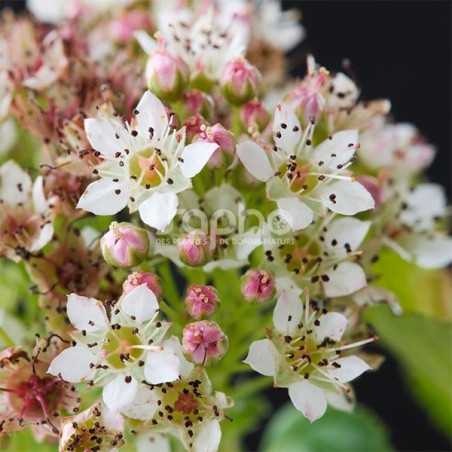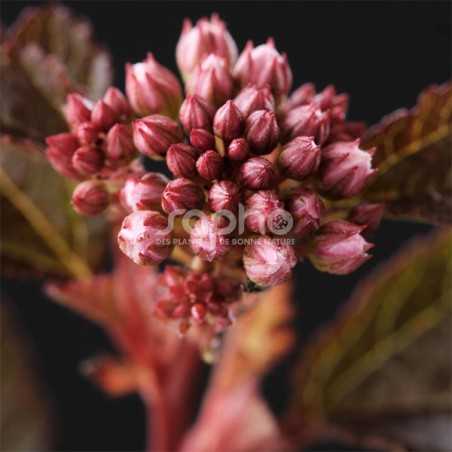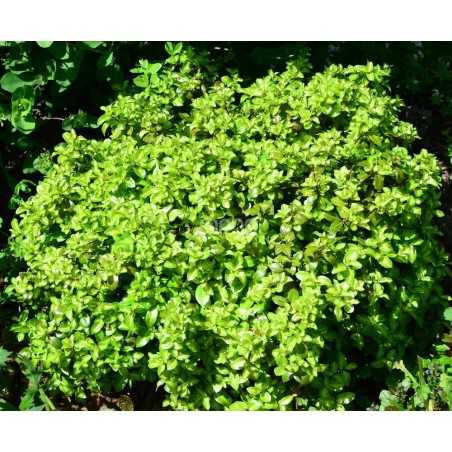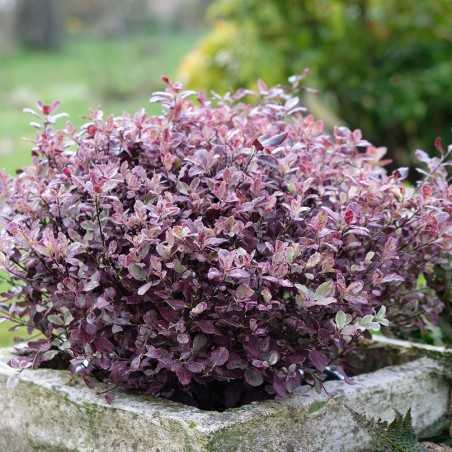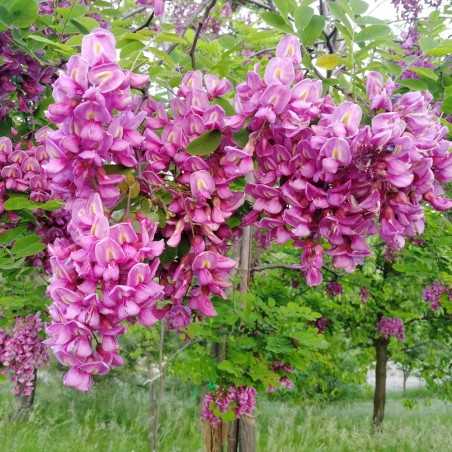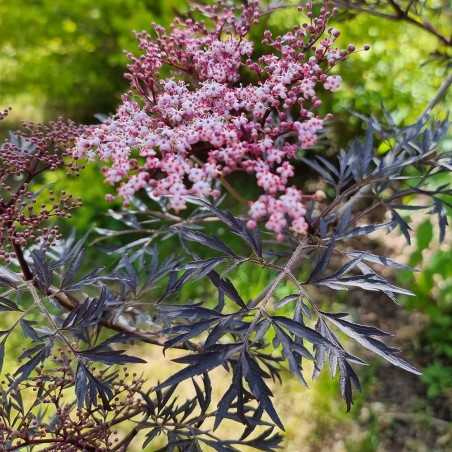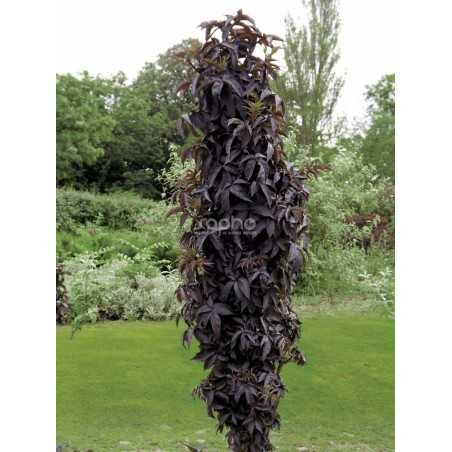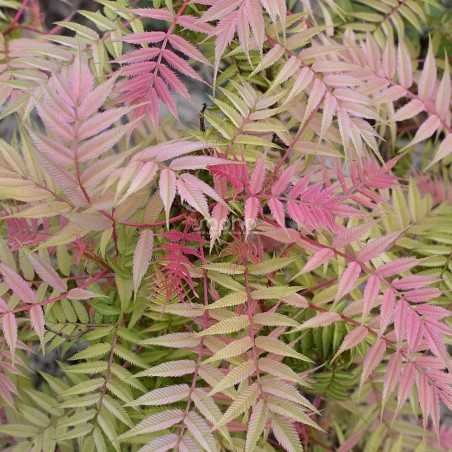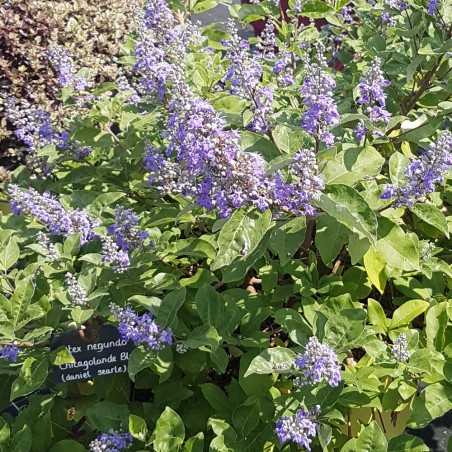A physocarpus with golden foliage
Raspberry Lemonade® is a highly flowering, melliferous physocarpus variety with a compact, upright habit and dense branching that doesn't spread.
Its fine, golden-green leaves do not burn in the sun. Its white blossoms are followed by small, brightly-colored coral-red fruits.
It's an easy plant, requiring little maintenance or pruning.
Filter By
Foliage
Position
Categories
Menu
Trees and shrubs
A shrub with cheering flowers in late summer!
Sweet Cherry Tea® is a highly flowering, melliferous physocarpus variety with a compact, upright habit and dense branching that doesn't spread.
Its fine leaves are brightly colored, evolving from orange-red spring foliage to purple. Its dark pink flower buds bloom light pink, with a mid-summer flush of flowers.
It's an easy plant, requiring little maintenance or pruning.
A golden ball for low hedges or in isolationThe variety 'Golden Ball' has very brilliant golden foliage. In its period of growth, its young golden-yellow leaves contrast with the older yellow-green leaves edged with a stronger green.Coming from the same breeding than Pittosporum tenuifolium 'Golf Ball', 'Golden Ball' has the same qualities: very dense, it naturally forms a ball of less than one meter. Fast-growing and branching from the base, it can be pruned. 'Golden Ball' is ideal for small spaces and low hedges as well as in pots and for topiary.As it is resistant to drought, wind and seaspray, it provides an alternative to box in temperate and Mediterranean areas. In May and June its small discreet violet-coloured flowers smell of honey.
Recommended for its low, naturally ball shaped growthThis cultivar originates from New Zealand.?Golf Ball? has a very round shape, not more than 1 m in dimension. It grows rapidly and stands out by its dense branches from the base upwards.Its evergreen foliage is light green.Discrete violet-brown flowers appear in Mai and June. The have a scent of honey but are of no decorative interest. 'Golf Ball' resists rather well to drought, and to temperatures of -5 to -10° C. It is excellent for the sea side because it accepts mist and wind.Recommended for small areas and low hedges, it is also suitable for pots and as topiary, like box.
Fantastic foliage in perpetual evolution
The Bannow Bay variety is a natural mutation of the Pittosporum Tom Thumb.
Its very dense foliage has evolving colors: olive green edged with white in spring, then splashed with pink and finishing in a beautiful shade of purple when the cold arrives.
Its natural, round clump growth requires little or no pruning.
This shrub adapts perfectly to mild climates, in the garden or in pots on a balcony or terrace.
A spectacular improvement of ‘Pink Cascade’
This variety is the result of numerous improvements to the red helmet variety, and has strong, flexible branches (virtually thornless).
Its generous flowering offers large clusters of crimson-pink flowers that are very melliferous.
Resistant to heat, drought, wind and pests, it thrives even in poor soil.
Use as an isolated plant or in the garden.
Purple and lacinated, a very decorative elderThis elder is very elegant thanks to its big, deep purple, nearly black, finely dissected leaves. The young shoots are green. The shrub tolerates half shade, but planting it in full sun, emphasizes the beautiful colour of the foliage. Its growth is medium.In June, BLACK LACE is covered in flat, pink buds, getting paler at the opening stage to become a creamy white. The contrast to the dark foliage is remarkable.At the end of summer, the dark purple then black berries are appreciated by the birds.Its purple and lacinated foliage, its abundant flowers and berries make it an decor for the garden. BLACK LACE should be planted individually or in free growing shrub-hedges, together with evergreens, for example.
Dark purple elder with an upright and thick shape.BLACK TOWER has an interesting upright and naturally thick shape.Its young shoots are green. Then the large-sized foliage becomes deep purple brown, covering the plant from the base upwards.In June - July, from a very young age, nearly at every node, numerous quite small pink and white flowers open, contrasting with the foliage. Black fruit appear in the autumn.
A novelty for the Sorbaria genus : foliage with long lasting colours, a growth that stays compact
Concerning the Sorbaria species, where novelties are rare, PINK HOPI® 'COUSORB05' has been chosen for its qualities, different from those of 'Sem'.The compound, serrated foliage is delicate, light and harmoniously layered. It is a remarkable plant, due to its young variegated shoots which are red, pink and cream, then veined with white. Bud burst is extremely precocious, starting in early March. The shoots withstand the cold (at least up to -3° C). The colourful period lasts a month longer than in the traditional varieties, the shrub shines until the end of Mai. Later, in the summer, the foliage turns green.The shape of PINK HOPI® has the additional advantage of staying compact and this selection produces less suckers. Its dense foliage makes it a good ground cover.The white flower panicles bloom in June - July.The shrub does not need any maintenance (neither treating nor pruning). It is very hardy.
A new hybrid chaste tree, created at the Chicago Botanical Garden, very resistant to cold
This very unusual shrub (wide and compact) has satin-finish foliage with a mix of round, simple and three-pinnate leaves.
Its long, dark-blue flowers are borne on darker stems. They are highly melliferous, attracting pollinators to your garden.
It is particularly resistant to pests, cold and drought, making it ideal for small gardens in sunny locations.

